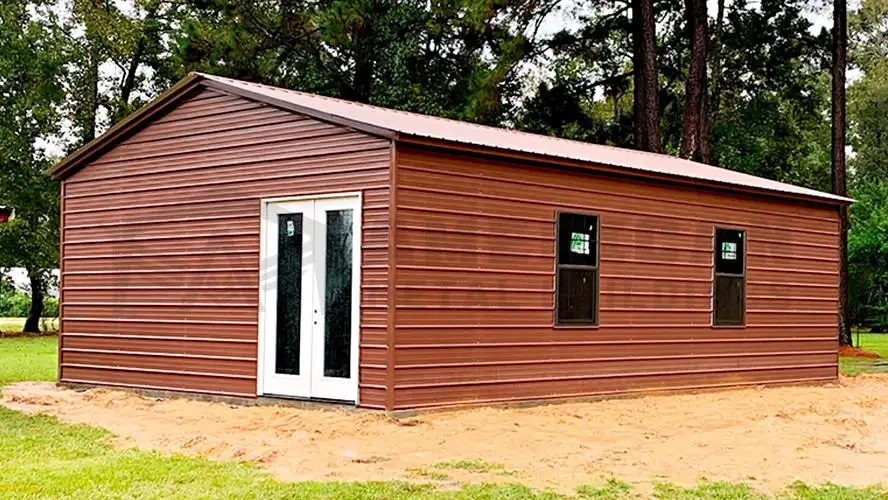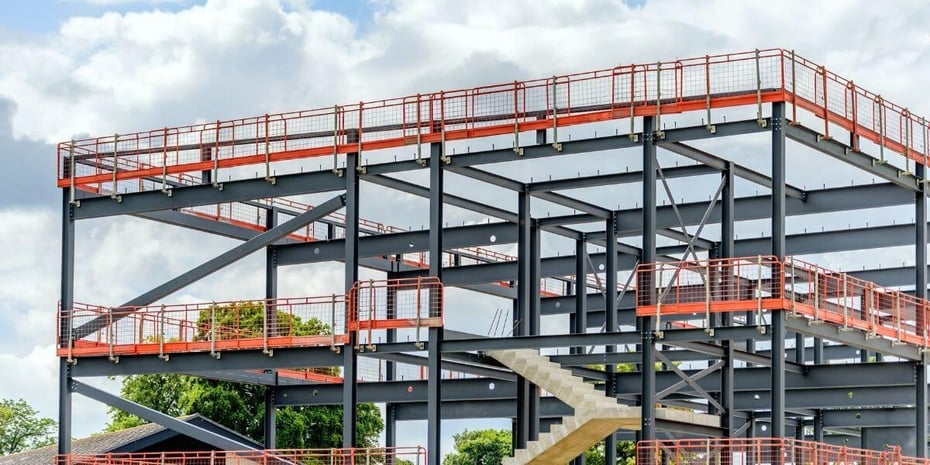Top-Quality Steel Buildings: Resilient and Versatile Structures for Any Type Of Function
Top-Quality Steel Buildings: Resilient and Versatile Structures for Any Type Of Function
Blog Article
Professional Guide to Steel Structure Layout: Optimizing Effectiveness and Longevity
Steel, with its extraordinary strength, sturdiness, and versatility, has emerged as a preferred alternative for modern building style. From enhancing layout factors to consider to applying economical construction techniques, the journey towards making best use of efficiency and durability in steel structure layout is a multifaceted one, offering a mix of useful obstacles and innovative remedies that thrust the sector onward. steel buildings.
Advantages of Steel Buildings
Steel structures use unparalleled sturdiness and cost-effectiveness contrasted to traditional building products. The stamina of steel offers superb architectural integrity, making it a recommended option for structures that need to stand up to rough weather or hefty tons. Steel is very resistant to pests, mold and mildew, and fire, making certain a much longer life-span with very little upkeep demands. Additionally, steel is a sustainable material, as it is fully recyclable and can be repurposed at the end of its valuable life.
In regards to cost-effectiveness, steel buildings are typically extra economical than structures made from various other products. The effective building and construction procedure of steel structures can result in reduced labor prices and shorter task timelines. Steel's sturdiness additionally converts to reduce upkeep expenses in time, as there is less demand for replacements or repairs compared to conventional structure products.
Design Considerations for Performance
Provided the benefits of steel buildings in terms of sturdiness and cost-effectiveness, it is crucial to concentrate on style considerations that take full advantage of performance and long life. When making a steel building for optimal performance, aspects such as the orientation, insulation, and layout should be thoroughly taken into consideration.

Furthermore, incorporating energy-efficient systems, such as HVAC, lights, and eco-friendly power resources, can even more improve the effectiveness of steel buildings. By incorporating these style considerations, steel structures can achieve ideal effectiveness and durability, giving economical and lasting remedies for numerous building and construction jobs.
Structural Stability and Long Life

In addition, the option of top quality steel and coverings is essential for durability. Corrosion-resistant finishings safeguard versus rust and wear and tear, extending the life of the structure. Regular maintenance, including inspections for indicators of wear or damages, is also critical for recognizing and resolving issues prior to they endanger the building's stability. By focusing on structural integrity in the design stage and throughout the building's lifespan, proprietors can guarantee their steel structures stay risk-free, efficient, and durable for many years ahead.
Cost-Effective Building Approaches
Effective building techniques play an essential duty in handling expenses without compromising the quality and integrity of steel imp source building jobs. Additionally, pre-engineered steel structures are recognized for their sturdiness and need very little maintenance, resulting in long-lasting price financial savings.
Another cost-effective technique is the design-build technique, where the style and construction stages are integrated. This approach fosters collaboration in between the design and building and construction teams, improving the address process and decreasing hold-ups and price overruns (steel buildings). By entailing all stakeholders from the start, prospective problems can be determined and dealt with early, conserving both money and time
Additionally, taking on lasting building and construction techniques, such as using recycled steel and incorporating energy-efficient features, can cause substantial price financial savings in the future. These practices not just reduce construction waste however additionally reduced operational costs through boosted energy performance. To conclude, executing economical building and construction techniques is vital for making the most of efficiency and ensuring the longevity of steel structure tasks.
Upkeep Tips for Longevity
Appropriate upkeep techniques are critical for ensuring the longevity and structural stability of steel structures. Normal inspections are vital to determine any indications of deterioration, damage, or use that could compromise the structure's longevity. As part of an extensive maintenance plan, it is vital to promptly resolve any issues that arise to avoid them from escalating and triggering a lot more comprehensive damage.

Another important upkeep idea is to inspect the building's welds, bolts, and links to ensure they are safe and secure and in good condition. Any kind of loosened or damaged parts must visit this website be repaired or replaced immediately to keep the architectural stability of the structure. By applying a proactive maintenance routine, steel building owners can optimize the long life and efficiency of their structures.
Verdict
In conclusion, steel structures use many advantages such as effectiveness, longevity, and cost-effectiveness. By very carefully taking into consideration layout elements, ensuring architectural integrity, and making use of cost-efficient building and construction techniques, steel buildings can be enhanced for optimal efficiency and durability.
From maximizing design considerations to executing cost-efficient building methods, the trip in the direction of making the most of performance and longevity in steel structure style is a multifaceted one, offering a mix of functional challenges and imaginative solutions that thrust the market ahead.
Offered the advantages of steel structures in terms of toughness and cost-effectiveness, it is essential to focus on layout considerations that maximize effectiveness and long life. When developing a steel building for ideal effectiveness, factors such as the orientation, insulation, and format must be carefully taken into consideration. In verdict, implementing cost-efficient building techniques is necessary for optimizing effectiveness and ensuring the long life of steel structure tasks.
By carefully taking into consideration layout facets, guaranteeing structural stability, and utilizing affordable building approaches, steel buildings can be optimized for maximum performance and longevity.
Report this page